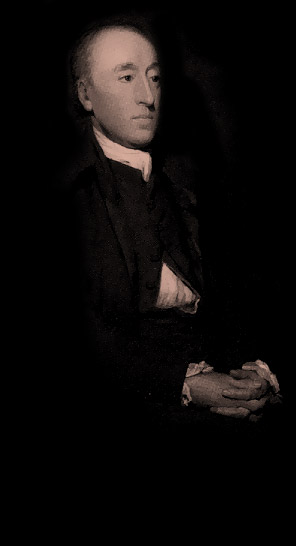- Biography
- Discoveries
- Read online
- Reading list
- Useful links
- Places to visit
- Did you know?
Charles Lyell made James Hutton's ideas the foundation of modern geology in his famous book, 'Principles of Geology'.
James Hutton (1726-1797)
Famous for:
- Establishing geology as a true science
- Formulating his controversial 'Theory of the Earth'
- Developing a theory of rain
- Being the first person to think of the Earth as millions of years old.
Farmer and naturalist James Hutton is credited with being the founder of modern geology. The first to determine that the Earth is millions of years old, Hutton believed our planet is continually being formed.
Early years
James Hutton was born in Edinburgh in 1726. He went on to study medicine and chemistry at Edinburgh University, and in Paris and Leiden. He took his degree in 1749.
In 1750 he returned to Edinburgh and resumed chemical experiments with friend James Davie. Their work on the production of sal ammoniac – a salt used for dying and working with brass and tin – led to a profitable partnership.
The science of geology
Hutton moved to Slighhouses, a lowland family farm, in the 1750s. He spent 14 years running the farm. This gave him an interest in how land changed with the forces of wind and rain.
In 1753 Hutton became interested in studying the surface of the earth. He went on to devote his scientific knowledge, powers of observation and philosophical mind to the newly-named subject of 'geology'.
Hutton went on a geological tour of the north of Scotland with George Maxwell-Clerk in 1764. He let his farms to tenants in 1768 and returned to Edinburgh. Between 1767 and 1774 he was closely involved with the construction of the Forth and Clyde canal.
Rocks and fossils
Travels in Britain and abroad, as well as a time farming in Berwickshire, gave Hutton the opportunity to observe different rocks. He was intrigued to find fossilised shells high above sea level, and puzzled over other geological features.
Hutton's thinking was then influenced by reading about Joseph Black's experiments with heated limestone, and by the proof of the power of heat demonstrated by James Watt's steam engines.
Controversial views
Hutton began considering the centre of the Earth as a massive heat source, where continuous processes destroy and reform rocks — the 'uniformitarian' theory of geology. That led to his belief that the Earth was millions of years old.
Other scientists and philosophers vehemently disagreed with him. Many of these were 'catastrophists' who believed that changes in geology happened as a result of natural disasters such as volcanic eruptions or floods.
The debate continued for several decades during the 19th century, until finally geologists became reconciled to Hutton's theory.
Later years
In 1785 Hutton presented his findings to the newly formed Royal Society of Edinburgh. He died on 26 March 1797 and was buried in Greyfriars Kirkyard in Edinburgh.
Five years after Hutton's death, mathematician John Playfair published 'Illustrations of the Huttonian Theory of the Earth'. This volume contained a summary of Hutton's 'Theory of the Earth' alongside numerous additional illustrations and arguments.
In our public poll, James Hutton was voted the seventh most popular Scottish scientist from the past.


